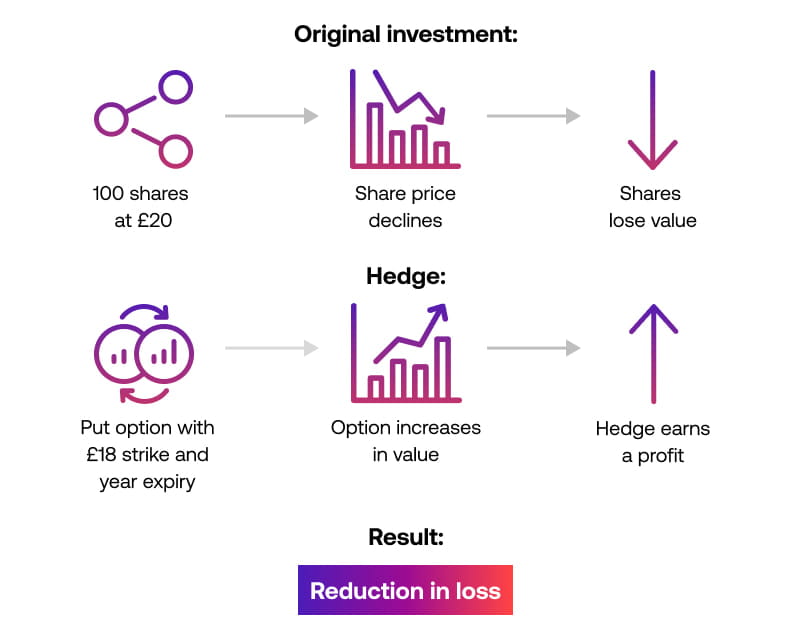
Advanced trading strategies
Advanced strategies explained
Advanced technical strategies enable you to take what you already know to the next level. In this lesson, we’ll look at what they are and explore one of the most common advanced strategies: hedging.
What is an advanced trading strategy?
An advanced trading strategy is a way to build upon the existing rules you’ve got in place.
While a basic strategy might be easier to understand and deploy, an advanced system looks at more complex data and signals to enter and exit positions.
The driving force behind moving toward a more complex trading strategy would be if your current rules need improvement, you’re looking to move into new markets or you just want to challenge yourself.
Building an advanced strategy usually involves opening multiple positions to achieve a goal or using additional indicators and patterns to confirm entry and exit points. Advanced strategies might even include trading using instruments that are often deemed too complicated for beginners, such as options.
An advanced strategy isn’t necessarily better. Sometimes the more simplified trading strategies have equally good outcomes. You’ll need to weigh up how much time you’re putting into a strategy to the returns you’re getting from it.
Don’t have a strategy yet? Take a look at our beginners’ course to learn the basics.
Over the next few lessons, we’re going to look at the different tools and instruments that traders use as the basis for their advanced strategies.
But up first is the most widespread advanced strategy, hedging.
Hedging explained
Hedging is the practice of opening multiple positions to reduce the impact of adverse price movements, either completely or to a known amount.
Hedging is considered an advanced strategy because it involves having a number of trades open at once, using various instruments and understanding the correlations between markets.
The premise is this: if your existing position is going to incur a loss, you’ll open a second (or third) position that will earn a profit to offset some of the risk.

Most hedging strategies use derivatives, such as CFDs, options or futures, all of which we’ve covered in our guide to leverage.
Say, for example, that you are invested in shares – but worried about an impending downward move in a stock you hold. You could short the stock using a derivative and profit if the underlying market declines. This would potentially offset any loss to your investment.
Why not just sell your investment? Well, there are tax implications for closing your position. And if you want to hold onto it long-term, it can be more beneficial just to hedge.
The effectiveness of a derivative for hedging is measured through its delta, or ‘the hedge ratio’. Delta is a measure of the relationship between price movements in the underlying compared to price movements in a derivative.
For example, if your strategy has a delta of one, then for every $1 move in the market, your derivative will also rise or fall by $1 in the opposite direction.
Most hedges won’t remove risk completely, but they do limit it. A strategy that completely offsets risk is known as a ‘perfect hedge’.
It’s important to remember that hedging isn’t free. You’ll be paying more money to open more trades, which means the costs can stack up against you if you’re wrong. You’d need to decide whether you’d rather take on the hedging costs or have an unknown risk against your capital.
Hedging example
You buy 100 shares of Company ABC at $20 per share and decide to hedge your investment by buying a put option with a strike price of $18 expiring in one year. This gives you the right to sell 100 shares of ABC for $18 any time in the next year.
Let's assume you’ve paid $1 per share for the option, a total premium of $100. If one year later ABC is trading at $30, you wouldn’t exercise the option because your prediction was wrong. You’d have lost $100 on the option.
Although your hedge was unsuccessful, the loss would be offset by the gain to your shareholding, which would give you an unrealised profit of $1,000 – or $900 once you’ve subtracted the premium.
If, however, ABC is trading at $10 at the end of the year, you could exercise the option and sell your shares for $18 each. Your proceeds from the sale would be $1800.
If you’d had to sell at $10 instead, you would have only recovered $1,000. So, including the cost of the option, you’ve reduced your loss by $700.

We’ll look at options strategies more in lesson four.






